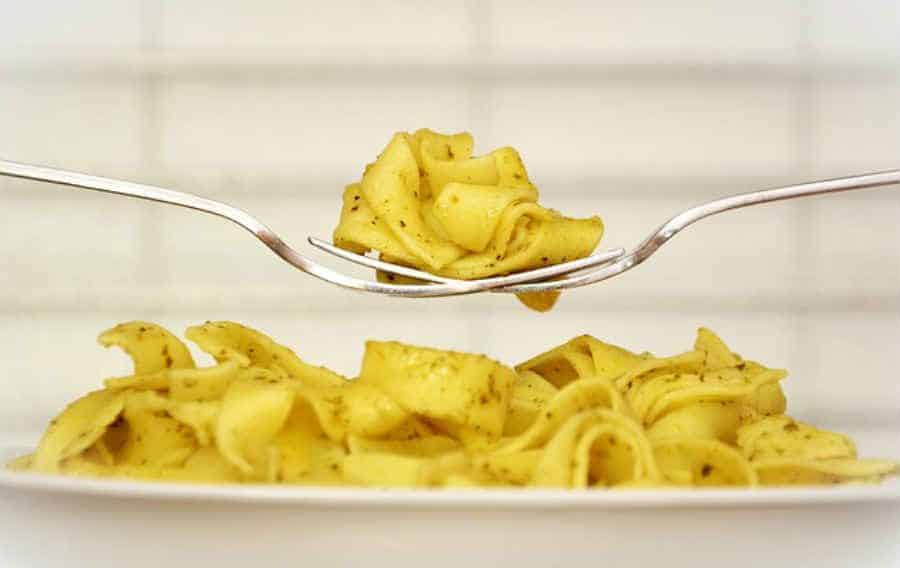Perfect Pasta and Sauce Pairings

It is common knowledge that pasta is a staple of many authentic Italian meals. However, it is less commonly known that of all the different types of pasta, each one has a special shape and size for a specific reason, often meant for a specific sauce or dish. Here are several different types of popular pasta and the reasons behind their shapes.
Cannelloni
Cannelloni is a large, cylindrical type of pasta that is most often used in pasta dishes that call for stuffed pasta. The word “cannelloni” derives from an Italian word that means “large reeds.” Since cannelloni noodles are quite large they are almost always served stuffed, sometimes with meat, but more often with ricotta or a spinach mixture. While many Italian pasta dishes are served with minimal sauce, stuffed cannelloni dishes are ones that sometimes require a heavier serving of sauce to soften the pasta.
Fettuccine
Fettuccine is an Italian word meaning “little ribbons,” which best describes this thick, flat pasta. While most people associate fettuccine with fettuccine alfredo, this dish is relatively new in the pasta world. The story of the creation of fettuccine alfredo began in Rome in 1908, when a restaurant owner named Alfredo Di Lelio was concerned for his wife’s declining health after the birth of their first child, and set out to make a dish to nurse her back to health. One of these was flat noodles combined with butter and parmesan, which Alfredo’s wife ate, and afterwards recovered from her illness, and fettuccine alfredo was born. Historically however, fettuccine is used with hearty meat sauces since the noodles are so thick.
Linguini
Linguini is an Italian word for “small tongues,” which is an accurate description of this small, flat pasta. Linguini is wider than spaghetti, but not as wide as fettuccine, and is therefore best served with light sauces such as cream or oil based, or even seafood sauces. This type of pasta is not traditionally used with meaty sauces because the smooth noodles do not hold sauce. However, they can be used successfully in stir-fry dishes.
Penne
The name of penne pasta comes from the Italian word for “feather” or “quill,” possibly because these small, cylinder-like noodles have angled ends, such as the point of a quill pen. Penne pasta can be made two ways: one in which the noodles are smooth, and one in which they are ridged. The latter version is better known in the United States and is used in a variety of dishes, from baked pasta to pasta salad. However, they are best used with light sauces, such as marinara or pesto, as the ridges helpfully capture sauce, and the angled ends act as scoops.
Ziti
Ziti is a short, tubular type of pasta with tiny ridges. The name “ziti” supposedly comes from a word meaning “bridegrooms,” as it has long been used to make baked ziti, a dish popular at Italian weddings. In some parts of Italy baked ziti at weddings is considered traditional. Ziti is one of the most commonly used noodles in baked pasta dishes because the ridges are excellent for catching cheese and meaty sauces.

